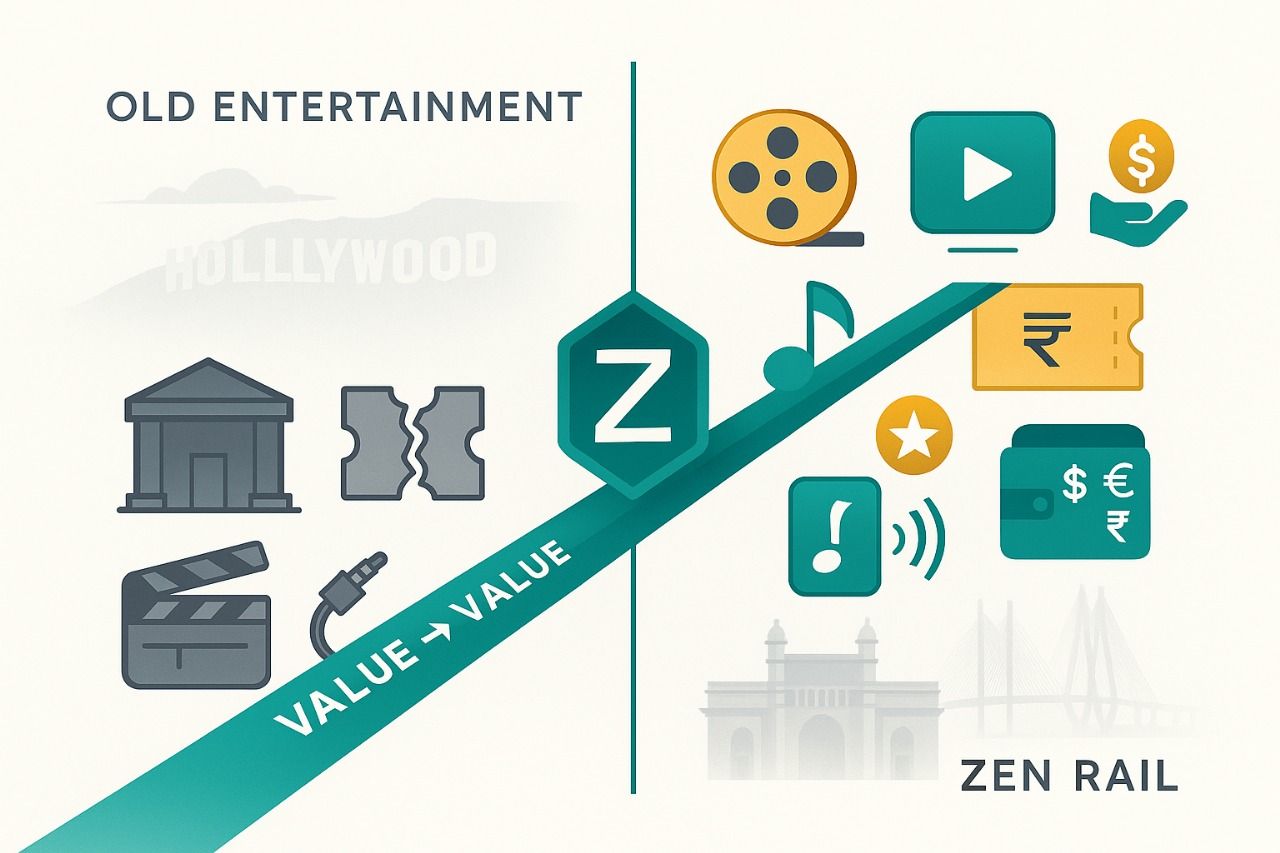
As we reach the end of the year 2022, it’s time to look ahead into 2023 to see how (or if) you should update your brand. Knowing these 8 brilliant branding trends will help you stay current and eye-catching, while also giving you an edge over your competitors.
1. Typography
One trend I’m already seeing in 2022 that I expect to continue into next year is the use of typography to express a sparse yet strong brand identity.
Typography is defined as “the style and appearance of printed matter.” Basically, brands that place a strong emphasis on typography are placing text at the forefront of their marketing.
To show you how this branding trend works, I’ll use an existing brand as my example: Hello toothpaste (sold at Target). When you look at the squeeze tube of Hello toothpaste, the first thing you see is the name of their brand in a large, stylized font. The rest of the tube is pretty simple: monochromatic in color and has no imagery or mascot.
The Hello typography isn’t random. It’s been thoughtfully designed to convey minimalism, which reflects the product itself and how it’s free of toxic excess ingredients like sulfates, parabens, triclosan, etc.
You’ll also notice that the brand name is typed in lowercase. This typographical choice was intentional, as well, as it communicates a sense of simplicity and friendliness that makes the brand more approachable to potential buyers. The special design for the “e” also makes the logo look distinctive from other toothpaste brands, and a little quirky, too. This is a brand that appears fun and inviting, without being loud or in your face.
This toothpaste product brings out all these positive emotions, just by pushing typography in their product branding. I expect a lot of brands, not just Hello, to continue this trend in 2023.
2. Bright Color
If you’ve noticed a lot more color on store shelves and on social media in the past few months, then you’ve caught onto another branding trend for 2023.
Color me This! The use of bright colors – pink, red, orange, Kelly green, turquoise, yellow – is a significant departure from the muted tones of 2020-2021. Color reflects mood, and so one reason we’re seeing so much of it now could be that brands need to reignite enthusiasm for shopping among consumers.
The last few years have been tough, what with the COVID 19 pandemic. People want to celebrate life and feel vibrant and happy. What better way to do that than by purchasing products that add joyful colors to their lives?
To that end, you may want to hop on this trend and inject some bright colors into your branding this coming year. It will do wonders for making your brand appear snappy and trendy amid all the others in your niche.
3. Nostalgia
Those of us who grew up in the 90s and the early 2000s (not me) never thought that the branding from that era would come back as a trending force.
Nevertheless, it’s making a comeback. Millennials are becoming nostalgic for the good old days when brands were fun, chaotic, and colorful, rather than minimalistic and streamlined.
If you want to hop on this trend for your own brand in 2023, you don’t have to be as overt as offering complimentary scrunchies or designing a retro-style logo. Instead, you can take a page from Spotify, the subscription music streaming platform, and tap into specific colors and imagery to draw out the feeling of nostalgia without stating it.
I’ll show you how that works.
Every year, Spotify releases Spotify Wrapped, a slide-style overview of each subscriber’s listening experience over the past 12 months. It shows individual subscribers which artists and songs they listened to the most, what their favorite album was based on the number of repeat plays, and so on. This information is displayed on colorful backgrounds and accompanied by dynamic animations, which are designed according to that year’s theme.
In 2022, the theme for Spotify Wrapped was “kaleidoscope,” with bold splashes of yellow, pink, green, orange, and purple. The overall effect leans heavily into nostalgic 90s and early 2000s vibes. This is how you can imbue your brand with nostalgia for bygone eras without stating it outright to the consumer.
4. Brand Activism
Brand activism is not a new concept, but the name is relatively new – and it’s been buzzing like a bee in a hive. The idea is that brands must not just say that they promote a particular value or social movement. They must show their support through their branding.
Brand Activism This trend is most evident during June, which is officially considered “Pride Month”. During this month, you’ll see a lot of brands change their logos on their social media accounts and even on their website to rainbows to reflect their support for the LGBTQ+ community. Many brands go even further by releasing a special version of their product that features rainbow colors and releasing it in time for Pride Month.
They may also donate to nonprofit organizations that are associated with the LGBTQ+ movement. For example, the Apple brand supports the National Center for Transgender Equality, which advocates for social justice for transgender individuals.
All of this may sound like just like brands are just promoting whatever is popular, but it’s actually a form of brand activism. They see an issue or a movement that is important to their consumer base, and they incorporate that into their branding to show that they, too, advocate for those same values.
Consumers are tired of fake and dishonest brands. Instead, they want to know that the company they’re purchasing from genuinely cares about issues, rather than just saying that they do.
Brand activism is a trend that has been around for a long time, but I can safely say that it’s going to continue in 2023. In fact, it may become more important than ever.
- Simplicity, Not Minimalism When you hear that the word “simplicity” is one of the branding trends for 2023, you may think it’s simply a synonym for “minimalism.” But the two aren’t quite the same.
Minimalism in branding involves using as little design as possible and paring your brand identity down to its barest elements. But simplicity is more about making your brand accessible and easy to understand at a glance. It operates on a customer-based perspective rather than a brand-based perspective.
To embrace simplicity, you don’t have to remove all extraneous adornment, color, or life from your branding. You just need to take away all the complexity. Identify the most important parts of your brand identity and communicate them to consumers in a short, concise way.
A great example of a brand that utilizes simplicity in its branding is Liquid Death, which sells mountain spring water in cans.
When you go to the Liquid Death website, you don’t see a lot of text, colors, or complicated graphics on the landing page. Instead, you see a small block of text on the lower left corner of the screen that says, “Don’t be scared. It’s just water.” In the center of the screen is a video showing different types of people drinking Liquid Death.
That’s it. Yet it effectively conveys Liquid Death as a cool product that cool people want to drink. They don’t need to say much to get the point across.
This type of branding is always trending because it always works. The faster and more simply you can communicate your brand identity and what your products are all about to your customers, the more sales you’ll make. It’s simply a tried-and-true formula.
6. Adaptable Logo Designs
Brands have to be everywhere these days. I’m talking about websites, social media platforms, television – everywhere. Each of these media requires a different method of representing your brand logo. For example, on Netflix’s Twitter account, their profile picture is the “N” in their brand name. But on their website, they display the full Netflix logo in the upper lefthand corner.
When you’re revamping your brand logo in 2023, focus on developing an adaptable design, so you can retain your brand identity and recognizability while optimizing it for the specific platform where you’re building your presence. You’ll want to put a lot of thought into this to ensure that no matter how you present your logo, your customers still identify it as belonging to you and you alone.
To see how this works in practice, let’s take another look at Netflix. The television and movie streaming service has designed a unique logo that is instantly recognizable to millions of people. It’s so recognizable, in fact, that even if they just put up one letter from their logo – the letter “N” – in that distinctive typography, consumers will still know the brand when they see it.
That’s what you should strive to achieve with your logo in 2023, if you haven’t already. Make it adaptable so that it’s easy to optimize for different platforms.
7. Humanization
The human touch has always been an important part of branding, but its significance is growing as we head into 2023. Perhaps this is another result of the COVID 19 lockdowns and social distancing, but I suspect that more people nowadays are longing for human connection. They want to feel that they’re purchasing products and services from real people, rather than cold, unfeeling robots or factories.
The same goes for branding. Companies that humanize their brands will be able to establish a deeper, more trusted connection with potential customers and increase the chances of a sale.
Mint Mobile is a wonderful example of humanizing what would otherwise be just another heartless, impersonable cell phone carrier. While big brands like AT&T and Verizon use their branding to emphasize high-speed internet, 5G data, and “deals” on expensive phones, Mint Mobile takes an entirely different tack. This brand does everything possible to reduce the cost of having a phone and a phone plan for the customer, and they make sure to emphasize that in their branding.
Mint Mobile approaches branding from a human pain point: reducing the high cost of having a dependable cell phone carrier. If you follow their strategy, then you’ll set your brand apart from all the other companies in your niche in 2023.
8. Trending Pop Culture
Pop Culture You may have noticed a trend in the past couple of years in which brands publish content that’s related to whatever is trending in pop culture, even if it has nothing to do with their actual brand.
For example, Wendy’s, the American fast-food chain, often posts memes to their Twitter account that are related to the latest trending topics in pop culture that day. Recently, it’s been a trend on social media to make fun of the state of Ohio, and in response, Wendy’s published this Tweet to their account on December 4th, 2022.
You’ll see similar behavior from other brands, too, both big and small. It’s actually a smart branding strategy. Here’s why.
These types of posts will generate a lot of engagement between you and your customer base. This is because they tap into what thousands or even millions of other people are talking about, and it makes your brand appear current and relatable when you talk about it.
Another reason it’s so successful (if you do it right) is that it can be very funny. Humor is always an excellent branding tactic – that is, if it’s part of your brand identity. Even if it’s not, though, you can usually find a way to connect your branding to current pop culture trends.
If you haven’t started doing that, you may want to get on it, as it will continue to be a trend in the coming year.
What do you think of these 8 brilliant branding trends of 2023? How will you be implementing them in your marketing strategies in the next few months? Let me know in the comments!
Pushing design boundaries, clean geometry, pop culture influence et al would be minor branding trends for 2023. Each year, whatever businesses we have been in, I have always tried to customize as much as we could and incorporated the shifting trends into our brand strategy regularly, whether they’ve been b2b or b2c businesses.
My 12-year-old son Neil regularly studies and does the same for his fledgling businesses where he and his team build games for kids and their other allied ventures. The branding force is too strong in our family.




